Yesterday we decided to spend the morning in the west desert of remote Tooele County, Utah.
The mountains out there are beautiful this time of year with the sage/juniper foothills leading up to the snowy mountains. This is one of many “island mountain ranges” of the Great Basin. At least one of them has elevations of over 12,000 feet.
1/4000, f/5.6, ISO 500, 500 f/4, 1.4 tc, natural light, not baited, set up or called in
I spotted this adult Red-tailed Hawk perched on the side of a hill and hoped to get some take-off shots as it lifted off and then perhaps some full flight images. I always try to anticipate direction of take-off in this type of situation and I was pretty sure it would lift off to my left in the direction it’s facing.
1/3200, f/5.6, ISO 500, 500 f/4, 1.4 tc, natural light, not baited, set up or called in
But I was wrong and in trying to compensate I clipped a few pixels of two flight feathers so I had to add canvas and “fix” those feather tips. I chose to do that so I could include the moment of takeoff in this presentation.
1/3200, f/5.6, ISO 500, 500 f/4, 1.4 tc, natural light, not baited, set up or called in
I like the light under the wings in this shot that reveals the colors and plumage patterns nicely.
1/3200, f/5.6, ISO 500, 500 f/4, 1.4 tc, natural light, not baited, set up or called in
There’s not as much light under the wings here but there is on much of the flared tail.
1/3200, f/5.6, ISO 500, 500 f/4, 1.4 tc, natural light, not baited, set up or called in
One more shot with pretty good light underneath as the hawk worked at gaining elevation and speed.
1/3200, f/5.6, ISO 500, 500 f/4, 1.4 tc, natural light, not baited, set up or called in
It skimmed the top of the ridgeline for a few wingbeats…
1/3200, f/5.6, ISO 500, 500 f/4, 1.4 tc, natural light, not baited, set up or called in
so that some of the brush was included at the bottom of the frame.
1/3200, f/5.6, ISO 500, 500 f/4, 1.4 tc, natural light, not baited, set up or called in
And then as it dropped down below the ridge I got one last shot before I lost focus because of the close background.
The raptors out there are spooky and very difficult to approach. This one decided to make an exception for us.
Good bird!
Ron


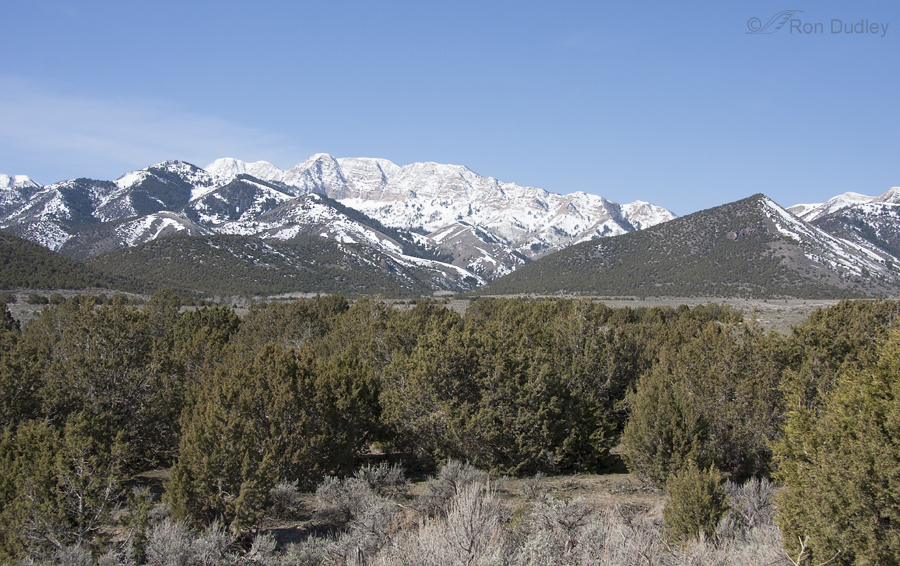
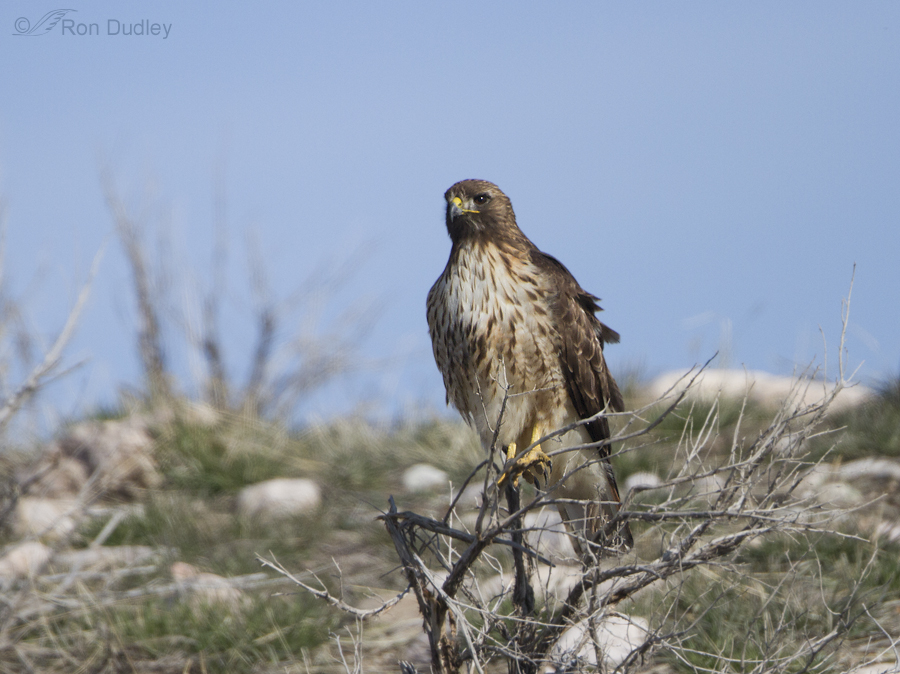
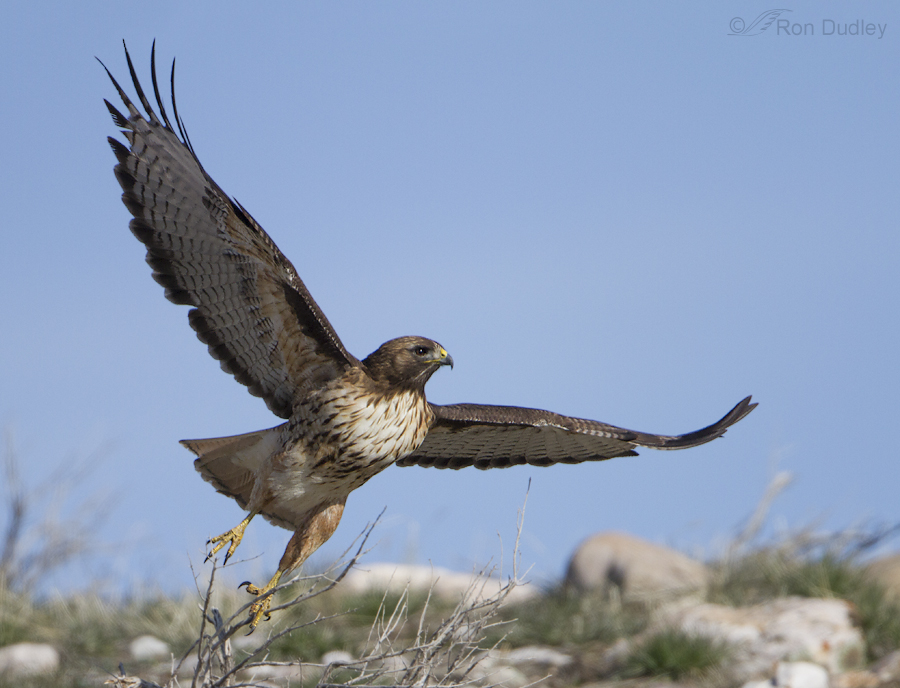
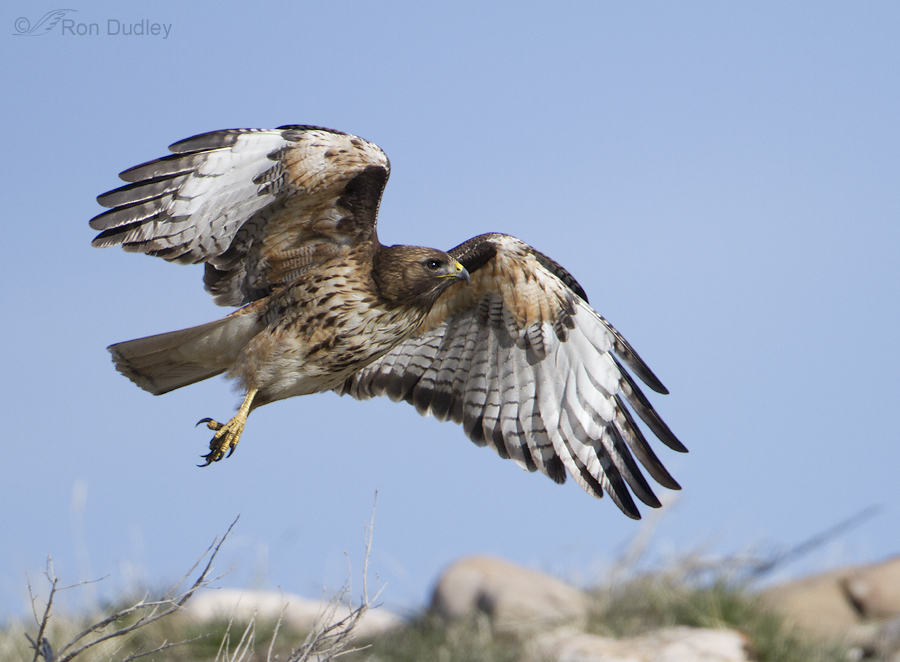
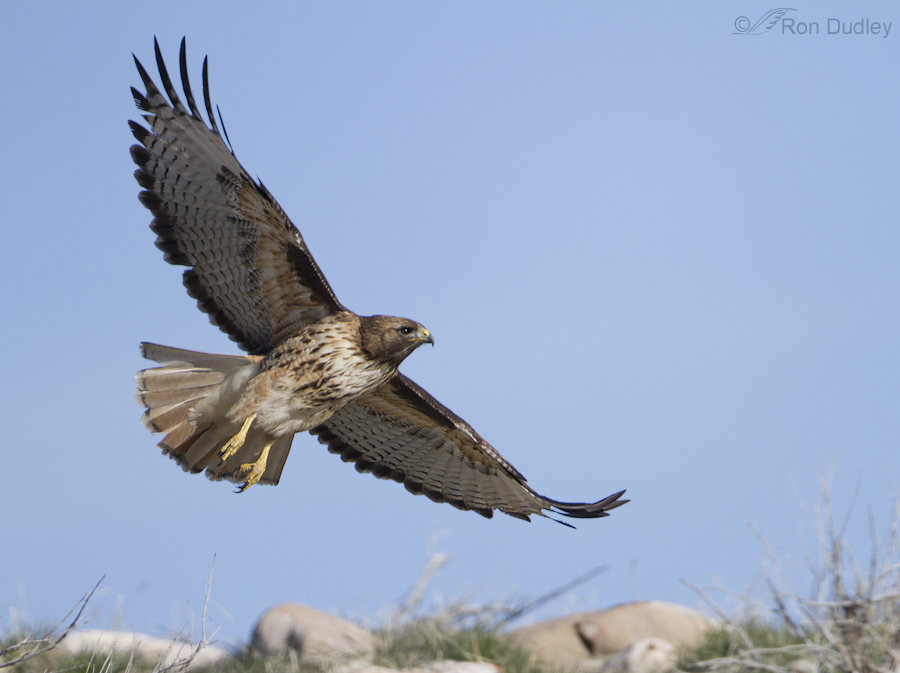

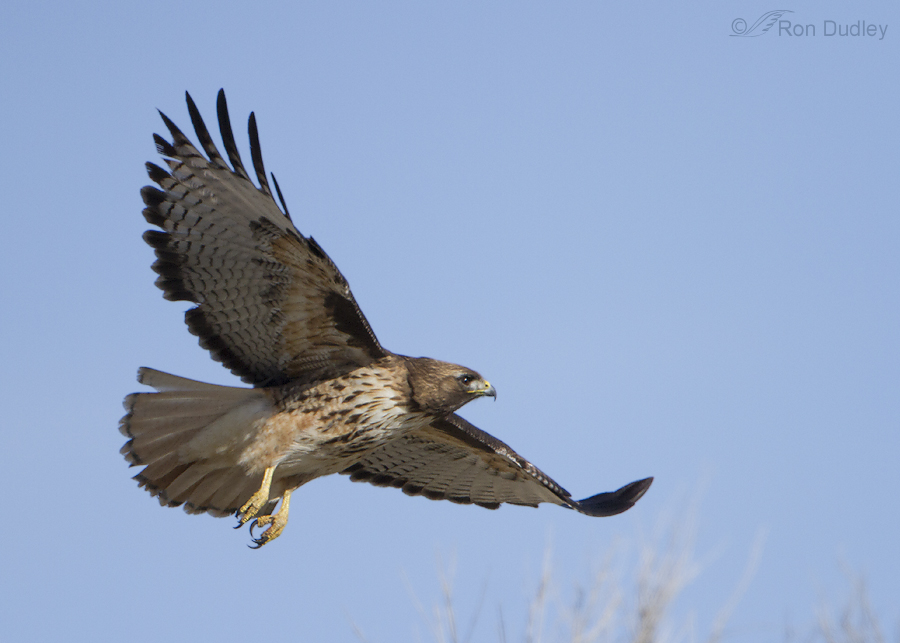
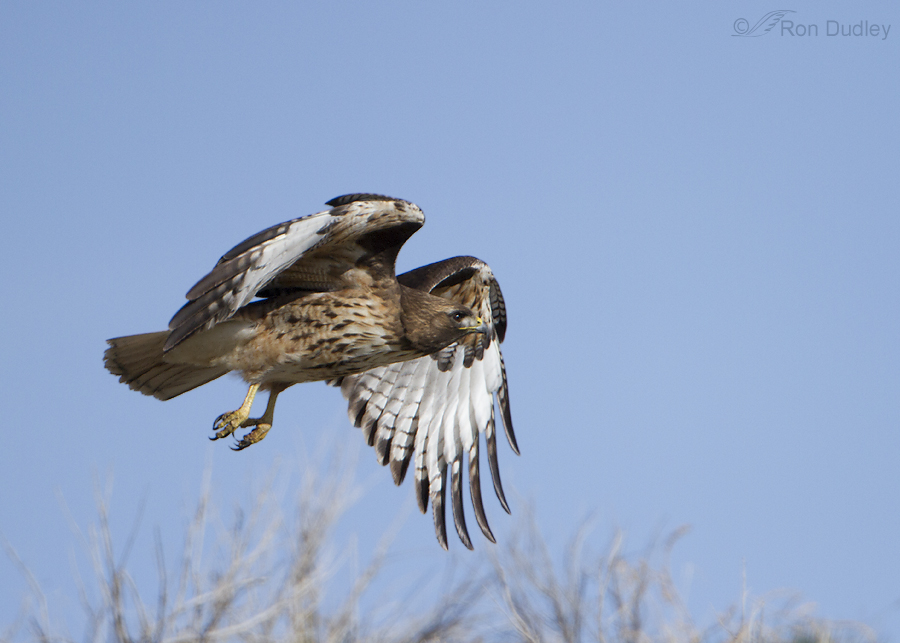
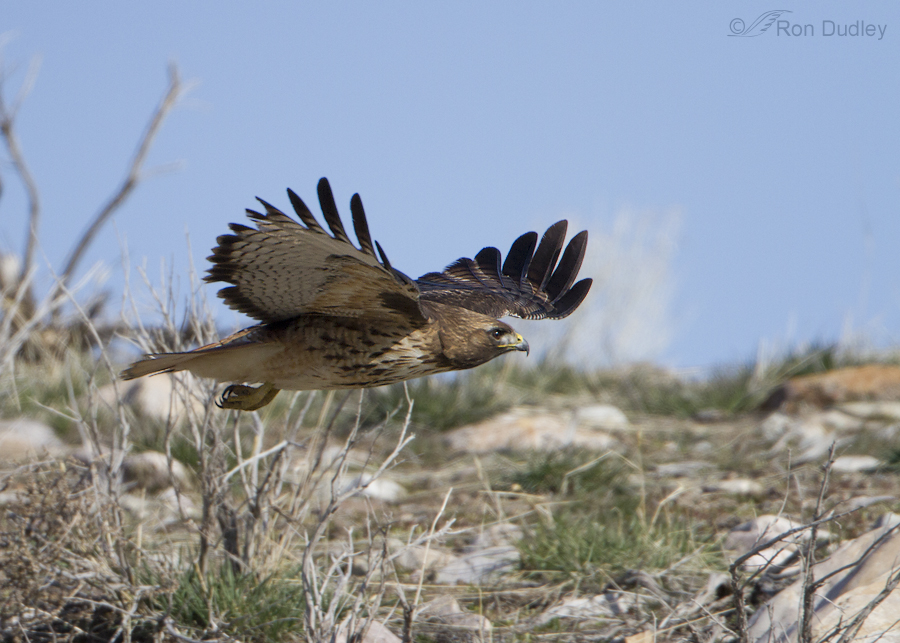
Nice series Ron! At first I saw your shutter speed for the first perched image and thought why so high. But after reading your text I quickly realized your master plan to catch the takeoff! Beautiful light and exposures.
Such a beautiful bird – the scenery was amazing too. Thank you so much.
always, always a pleasure to get your emails and come here to enjoy your amazing photography. I think I mentioned before how much I appreciate the inclusion of your camera settings.
Lois, I know that many readers want those techs included so I’ll keep doing it. I like to see them in the blogs I visit too.
Great shots and location. And thank you again for the details on how to photograph these beauties.
Thanks, Tana. Glad you enjoy those details.
Ron – As usual great birds and good pictures. I would agree with John that the last pic in the series is my favorite. Here along the Front Range of Colorado we see RTHA all the time. In fact this morning when I opened the blinds on the living room window I looked out and saw a rather large bird perched high up on my neighbors cottonwoods. I got my binos and scope and checked it out. It was a juvenile RT and the morning light was just right to get a good view of the bird. What was amazing was the number and variety of birds that were coming very close to also check it out (house finches, doves, starlings and a couple jays). Nice morning surprise. Keep up the good work – love your posts.
Thank you, Mark. We get quite a few red-tails around here too but it seems like they’re usually on telephone poles…
I love this sequence! Thank you, Ron.
Thanks, Sharon.
Another terrific sequence Ron ! The last image of the RT ‘s low level swoop over the landscape is my favorite ( thought they’re all excellent).Thanks.
John, When I first started preparing this post I thought my favorite was the 4th image down (3rd bird) but as I thought about it more I chose the same favorite you did in the end.
Great Series Ron. I particularly like the fact you showed a habitat image along with the hawk in flight shots. DOF, focus and composition is spot on. Beautiful scene. I can’t get over how well these shots along with others you show where the focus is spot on.
Question: Are you manually focusing or is it on auto focus?
Many thanks for sharing these wonderful images.
Hi Dick, I always use AF, though at times, if I think the bird will fly directly to either my right or left (and will stay in the same plane for a few frames), I’ll prefocus on the bird and then not try to focus-track the bird as it takes off. If I guess wrong, it’s frustrating…
Looks to be a Male(thin legs). Flaconers like to go with Females because of the more robust legs. Males tend to get injured more when hunting larger game like jacks. His color is so light! He seems to be young bird, maybe in his second year(?), he still has a lot of markings on his chest. You know how much I love Red-Tails Ron….They are full of character and very intelligent. I could train many different breeds, but I choose RT’s because they have a bit of everything from the world hawks. For me there is nothing cooler than witnessing a take off up close….and I get to do that everyday. Please, take as many Red-Tailed Hawk pictures as you like, I enjoy them all!!
Tim
Thanks, Tim. I wish I knew these birds as well as you do so I could ID sex just by looking at the legs.
lol…I’m far from perfect, but as a rule of thumb, females are 20-25% bigger than males.
Tim